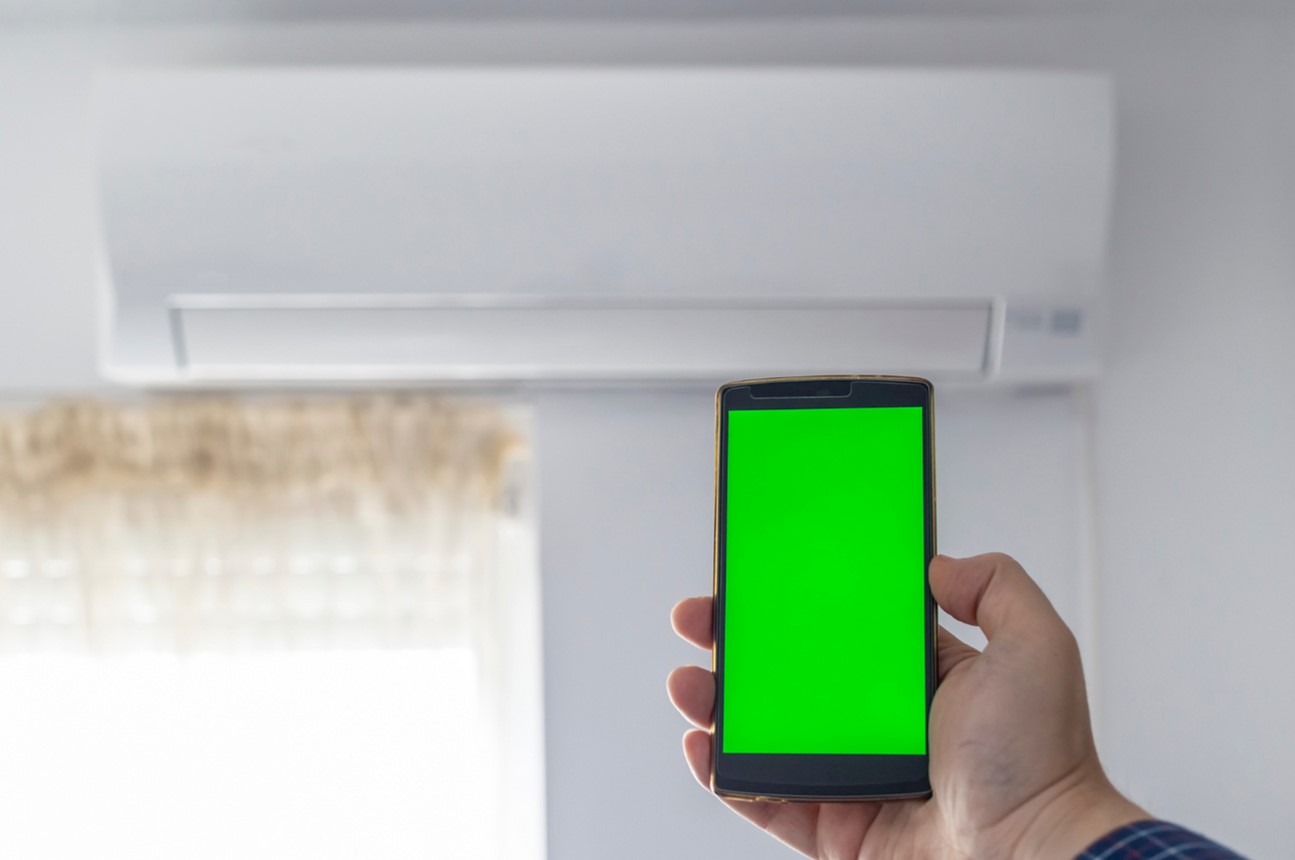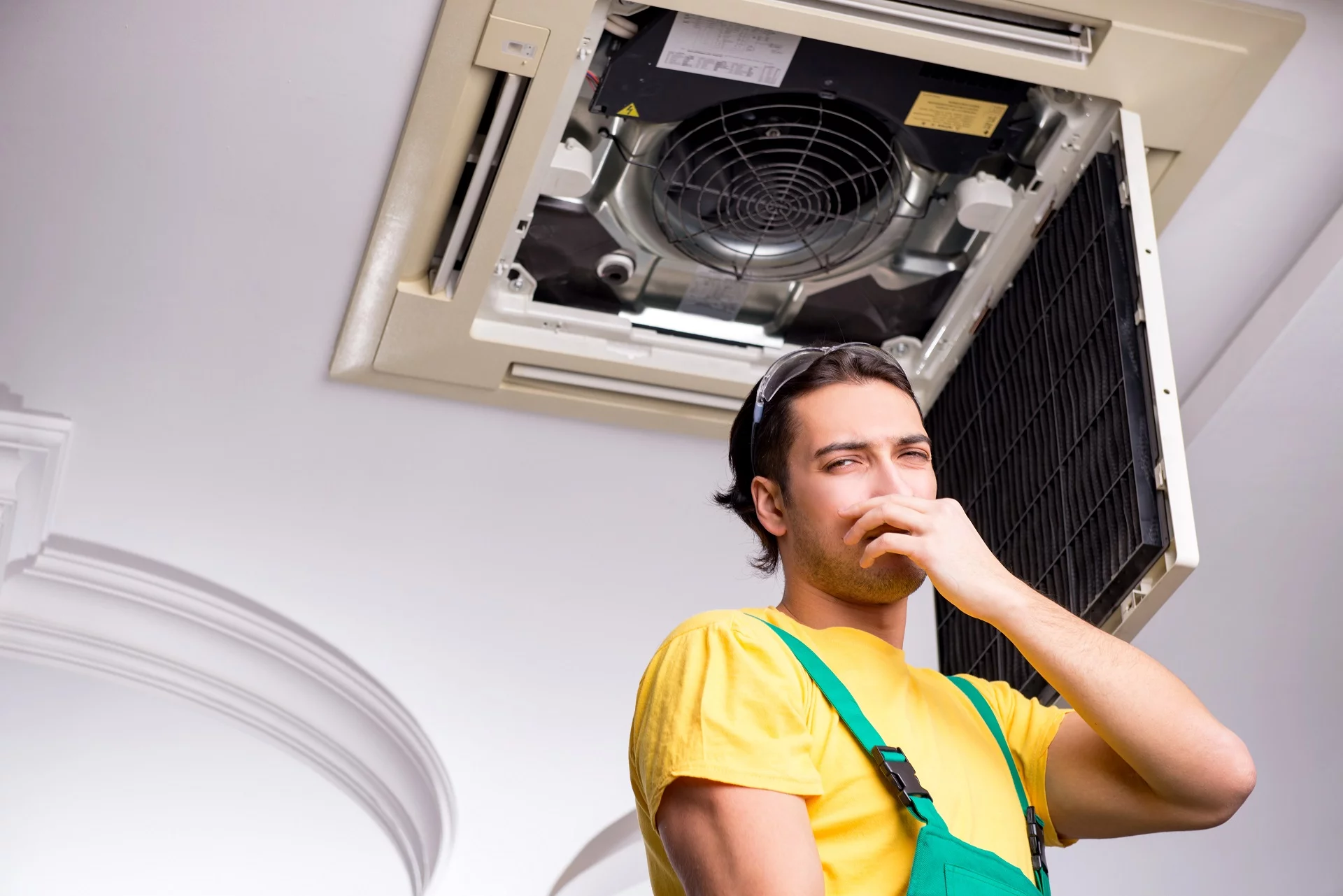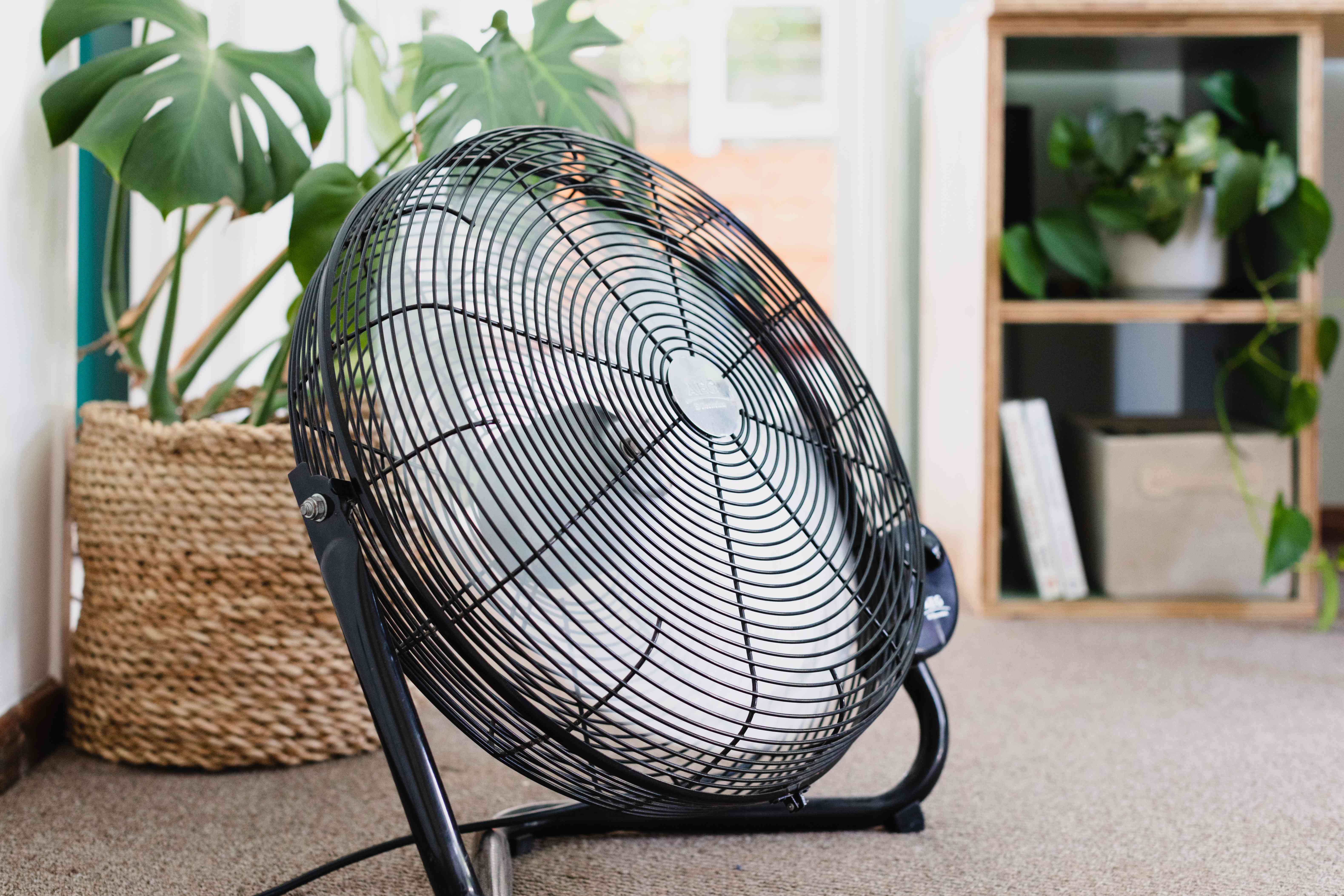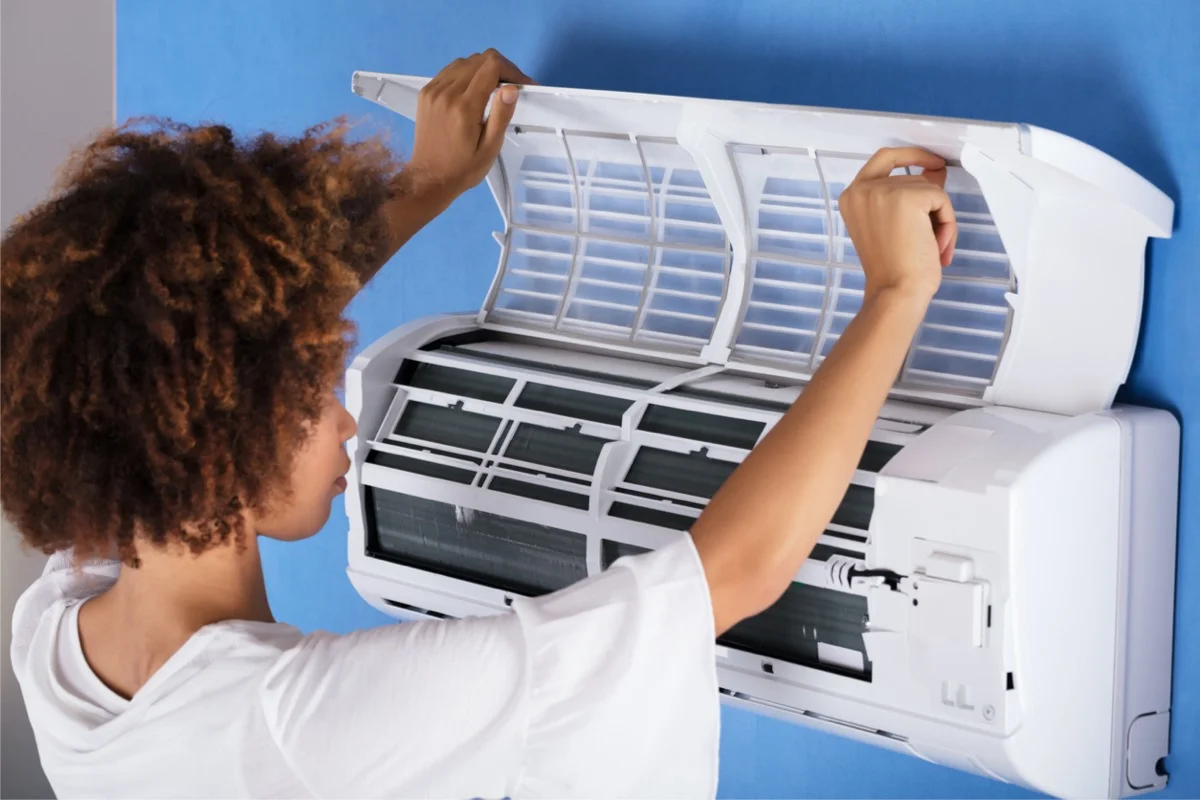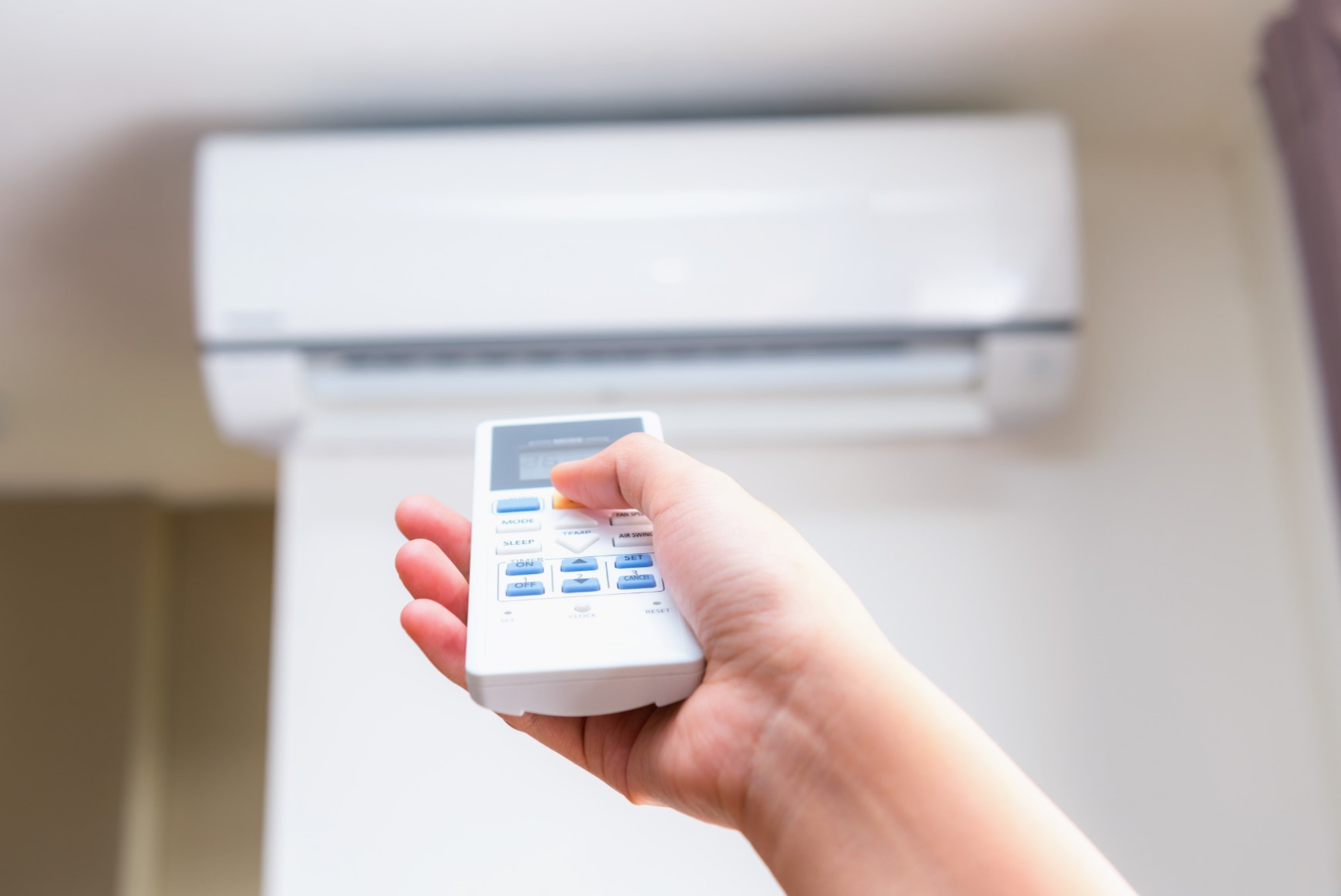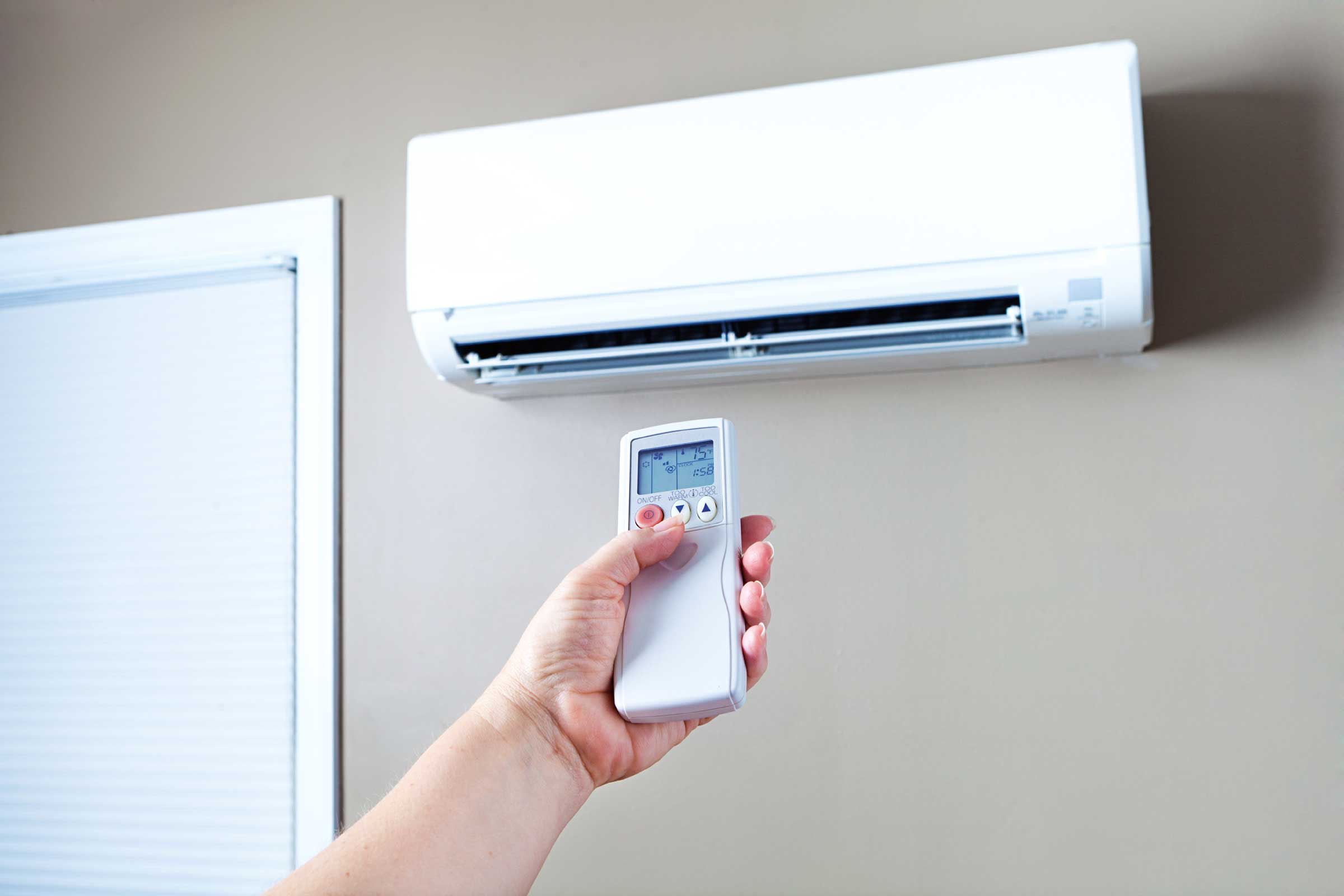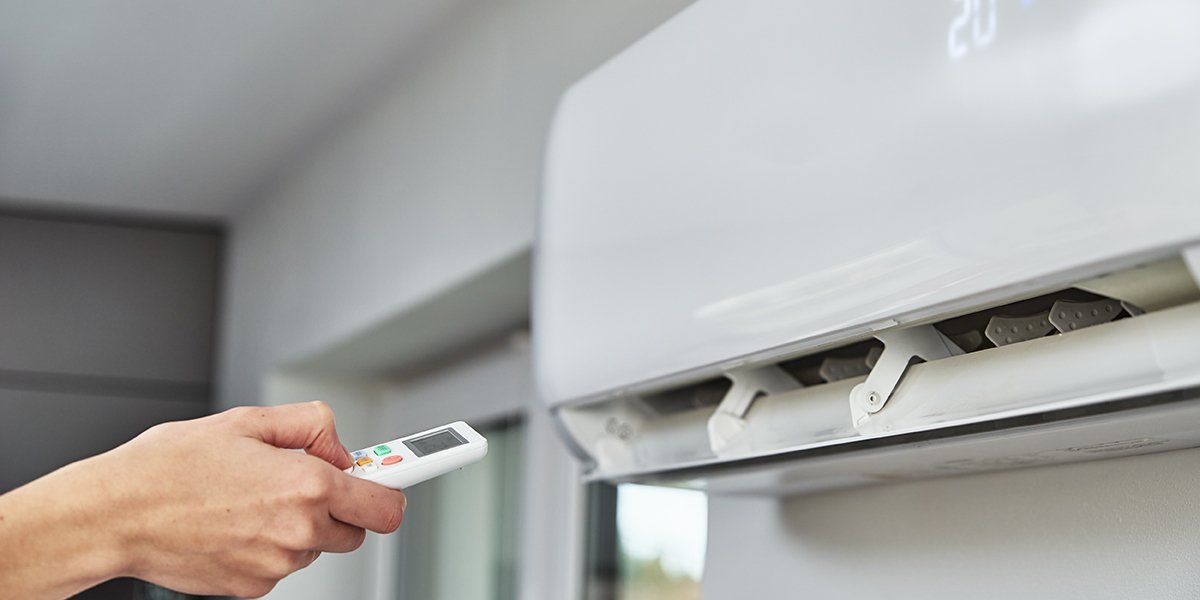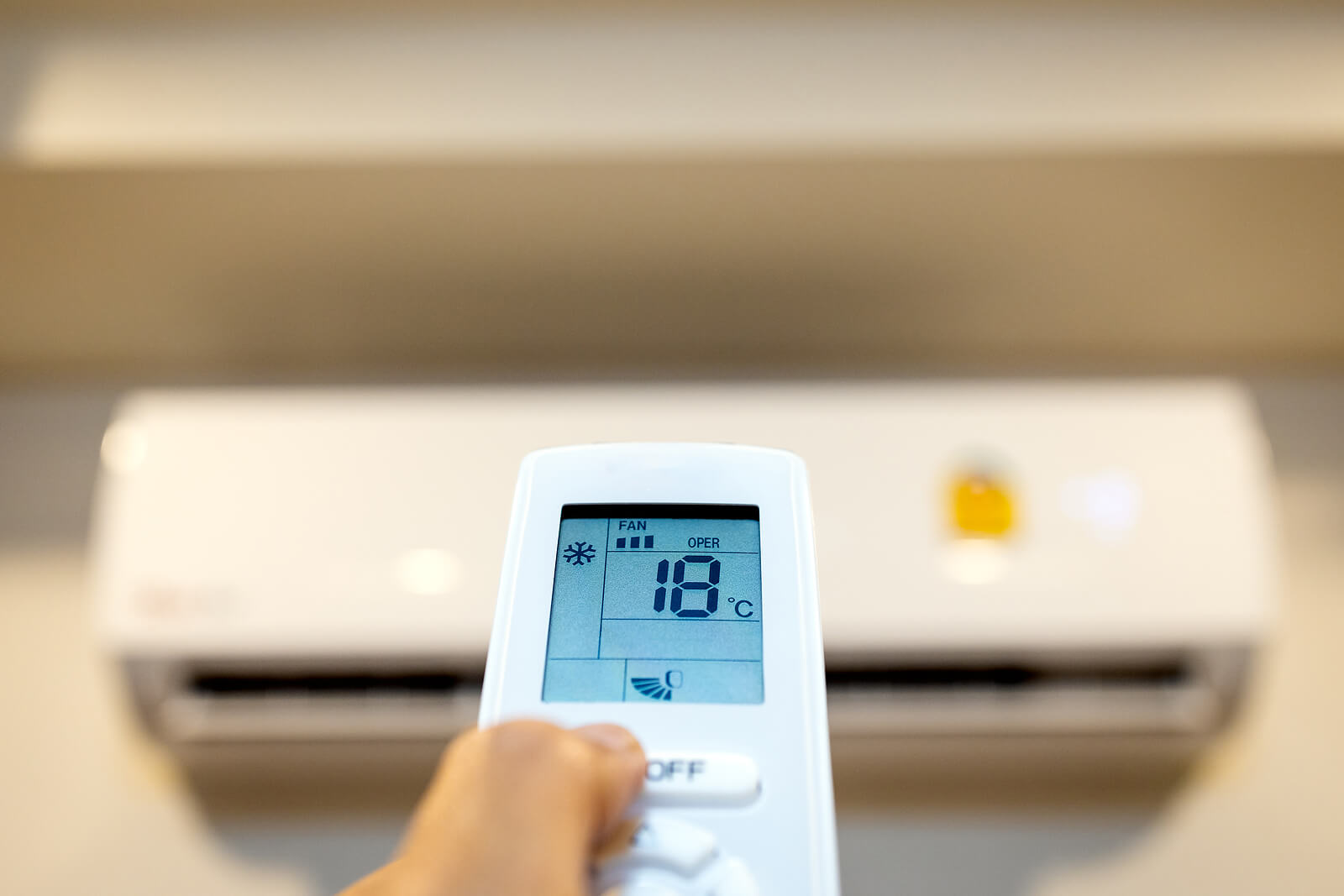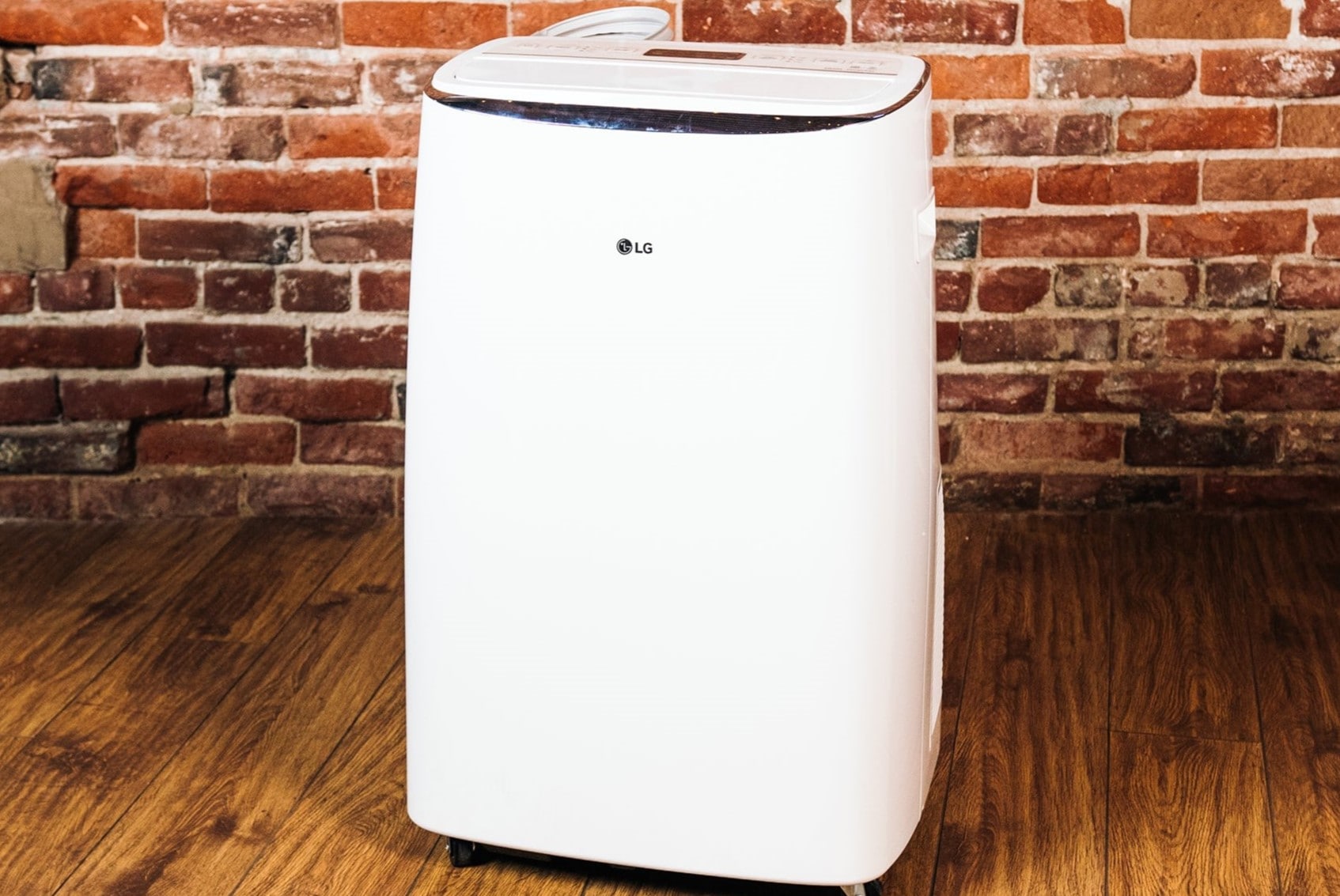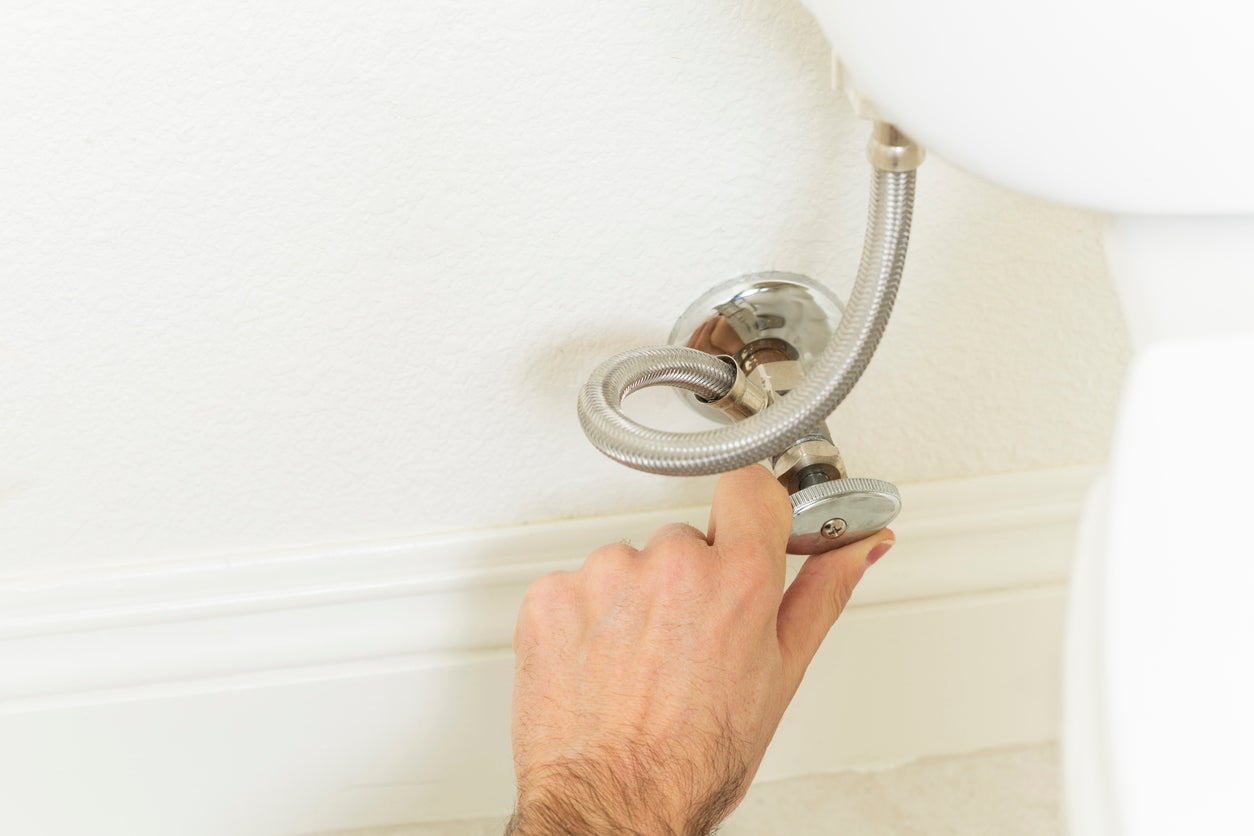Home>Home Maintenance>Air Conditioner Keeps Running When Turned Off
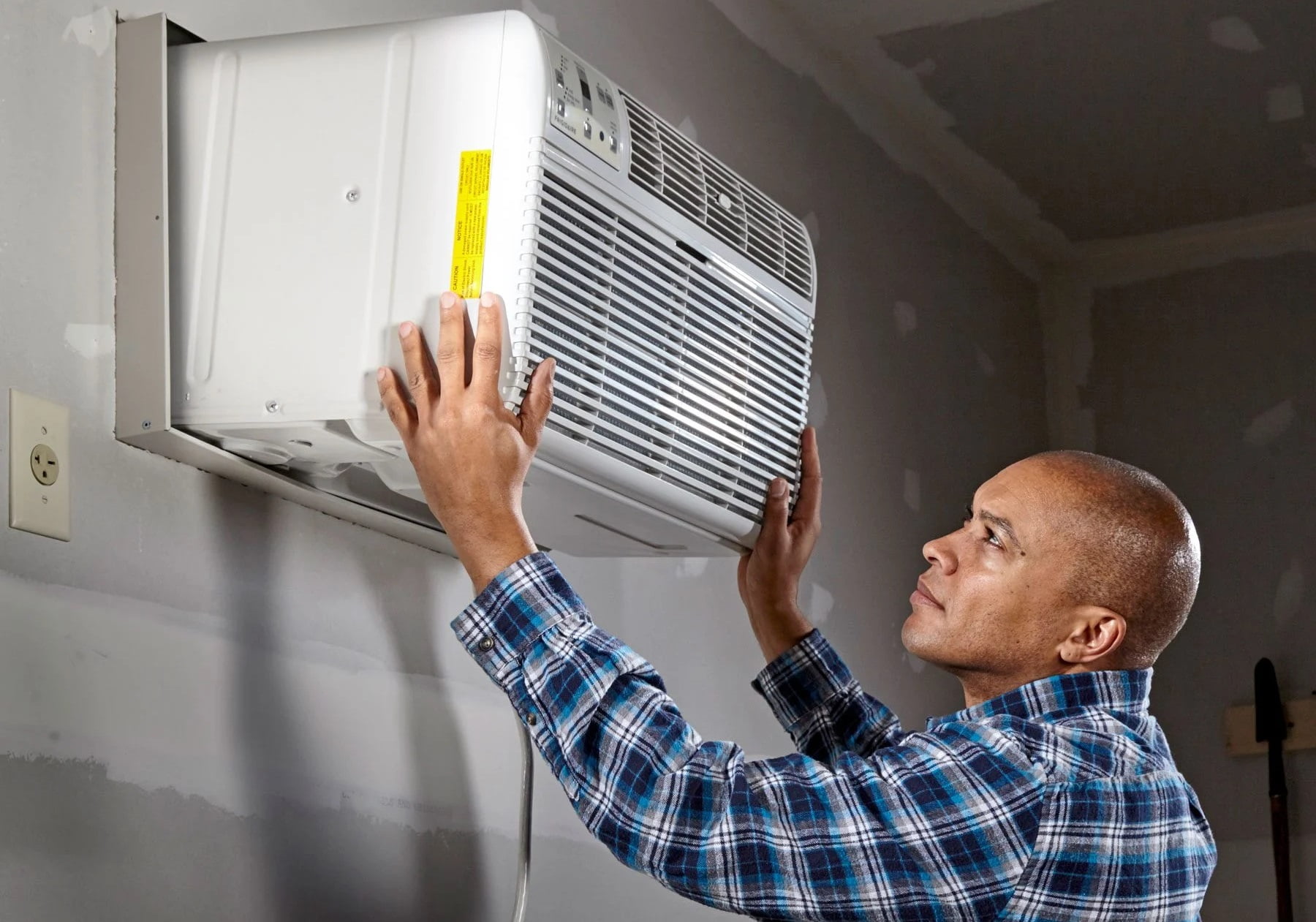

Home Maintenance
Air Conditioner Keeps Running When Turned Off
Modified: October 20, 2024
Discover why your air conditioner keeps running even when turned off with our comprehensive guide to home maintenance.
(Many of the links in this article redirect to a specific reviewed product. Your purchase of these products through affiliate links helps to generate commission for Storables.com, at no extra cost. Learn more)
Introduction
An air conditioner can provide much-needed relief during hot summer months by keeping your home cool and comfortable. However, it can be concerning if your air conditioner continues to run even after you have turned it off. This not only leads to wasted energy but can also put unnecessary strain on your cooling system. Understanding the possible causes can help you troubleshoot and address the issue promptly.
There are several reasons why your air conditioner may keep running when you have turned it off. It could be due to thermostat issues, a faulty relay switch, problems with the condenser unit, malfunctions in the air handler, issues with the blower motor, refrigerant leaks, or even wiring problems. By identifying the underlying cause, you can take appropriate steps to resolve the issue and ensure that your air conditioner operates efficiently.
In this article, we will explore each of these possible causes and provide troubleshooting steps to help you fix an air conditioner that keeps running when turned off. It is important to note that if you are not comfortable troubleshooting electrical components or if you believe the problem is more complex, it is always best to consult a professional HVAC technician for assistance.
Key Takeaways:
- Don’t sweat it! Check thermostat settings, inspect relay switch, and clean condenser unit to troubleshoot and fix your air conditioner running when turned off.
- Stay cool! Regularly check blower motor, look for refrigerant leaks, and ensure proper wiring connections to keep your air conditioner running smoothly.
Possible Causes for an Air Conditioner Keeps Running When Turned Off
When your air conditioner continues to run even after you have turned it off, it can be frustrating and concerning. Here are some possible causes for this issue:
- Thermostat Issues: A malfunctioning thermostat may be causing your air conditioner to run continuously. This could be due to a faulty temperature sensor or a miswiring issue.
- Faulty Relay Switch: The relay switch is responsible for controlling the power supply to various components of your air conditioner. If the relay switch gets stuck or fails, it can cause the system to keep running even when it’s supposed to be turned off.
- Condenser Unit Problems: Issues with the condenser unit, such as a dirty condenser coil or a malfunctioning fan motor, can prevent the system from shutting off properly.
- Air Handler Malfunctions: Problems with the air handler, such as a faulty blower motor or a malfunctioning circuit board, can cause the system to run continuously.
- Blower Motor Dysfunction: If the blower motor is not functioning properly, it may not be able to circulate the air correctly, leading the system to keep running to compensate for the lack of airflow.
- Refrigerant Leaks: Low refrigerant levels due to a leak can cause the system to work harder to cool your home, resulting in the air conditioner running non-stop.
- Wiring Problems: Faulty or loose wiring connections can disrupt the electrical flow and cause the air conditioner to keep running even when it should be turned off.
These are just some of the possible causes for an air conditioner that keeps running when turned off. Next, we will explore troubleshooting steps to help you identify and fix the issue.
Thermostat Issues
One of the possible causes for an air conditioner that keeps running when turned off is thermostat issues. The thermostat is responsible for measuring the temperature in your home and signaling the air conditioner to turn on or off to maintain the desired temperature. If there are issues with the thermostat, it may not be able to accurately sense the temperature, leading to continuous operation of the air conditioner.
Here are some troubleshooting steps to assess and resolve thermostat issues:
- Check the thermostat settings: Make sure the thermostat is set to “Cool” and the desired temperature is correctly selected. Also, ensure that the thermostat is not set to “Fan” or “On.”
- Replace the thermostat batteries: If your thermostat is battery-powered, low batteries can cause it to malfunction. Replace the batteries and see if the issue persists.
- Calibrate the thermostat: Over time, the thermostat may become uncalibrated, leading to inaccurate temperature readings. Refer to the manufacturer’s instructions to calibrate the thermostat properly.
- Clean the thermostat: Dust and debris can accumulate on the thermostat, affecting its functionality. Gently clean the surface of the thermostat with a soft cloth or brush.
- Check thermostat wiring: If you have recently installed or repaired the thermostat, double-check the wiring connections to ensure they are secure and properly connected.
If the above troubleshooting steps do not resolve the issue, it may be necessary to replace the thermostat. Consult the user manual or seek professional help to ensure proper installation and programming of the new thermostat.
Remember, if you are not comfortable working with electrical components or if you suspect a more complex issue, it’s best to consult a professional HVAC technician for assistance.
Faulty Relay Switch
A faulty relay switch can be another possible cause for an air conditioner that keeps running when turned off. The relay switch is responsible for controlling the power supply to various components of the air conditioning system. If the switch gets stuck or fails, it can prevent the system from shutting off properly, leading to continuous operation.
Here are some troubleshooting steps to assess and resolve issues with the relay switch:
- Locate the relay switch: The relay switch is typically found in the control panel or near the condenser unit. Refer to the user manual or consult a professional if you are unsure about its location.
- Inspect the relay switch: Carefully examine the relay switch for any signs of damage, such as burnt or melted components. If there are visible signs of damage, the switch may need to be replaced.
- Tap the relay switch: Sometimes, a faulty relay switch can be temporarily fixed by giving it a gentle tap. This can help release any stuck components and restore proper functioning. However, keep in mind that this is only a temporary solution and the switch should be replaced for a long-term fix.
- Check the continuity: Using a multimeter, test the continuity of the relay switch. If the reading shows no continuity or inconsistent readings, it indicates a faulty switch that needs replacement.
- Replace the relay switch: If you have determined that the relay switch is faulty, it needs to be replaced. Consult a professional HVAC technician for proper installation and ensure that you use the correct replacement part.
It’s important to note that working with electrical components can be dangerous, and if you are not confident in your abilities, it’s best to seek the assistance of a qualified technician.
By troubleshooting and addressing issues with the relay switch, you can resolve the problem of an air conditioner that keeps running when turned off and ensure proper functioning of your cooling system.
Condenser Unit Problems
Another potential cause for an air conditioner that keeps running when turned off is problems with the condenser unit. The condenser unit is responsible for releasing heat from the refrigerant and expelling it from your home. If there are issues with the condenser unit, it can prevent the system from shutting off properly.
Here are some troubleshooting steps to assess and resolve condenser unit problems:
- Check for a dirty condenser coil: Over time, the condenser coil can accumulate dirt, debris, and even grass clippings. A dirty condenser coil can restrict airflow and affect the efficiency of the unit. Gently clean the coil using a soft brush or a vacuum cleaner with a brush attachment. Avoid using excessive pressure, as it may damage the fins.
- Inspect the fan motor: The fan motor helps in the heat dissipation process. If the fan motor is not functioning correctly, it can lead to overheating and continuous operation. Check for any obstructions or signs of damage to the fan motor. If necessary, consult a professional to have it repaired or replaced.
- Check the fan blades: Ensure that the fan blades are clean and free from any obstructions. Any bent or damaged blades should be repaired or replaced, as they can cause imbalances and affect the performance of the condenser unit.
- Inspect the capacitor: The condenser unit relies on the capacitor to provide the necessary electrical energy to start the fan motor and compressor. If the capacitor is faulty, it can cause issues with the unit’s operation. Consult a professional to test and replace the capacitor if needed.
- Ensure proper clearance: The condenser unit needs adequate space around it to allow for proper airflow. Make sure there are no obstructions, such as plants, furniture, or debris, hindering the airflow around the unit. Trim any vegetation or clear any debris that may be obstructing the unit.
If the troubleshooting steps above do not resolve the issue, it’s recommended to seek the assistance of a professional HVAC technician for a more in-depth assessment and repair. They have the expertise and equipment to diagnose and address condenser unit problems effectively.
By addressing issues with the condenser unit, you can restore proper functioning to your air conditioner and prevent it from continuously running when turned off.
Read more: When To Turn On The Air Conditioner
Air Handler Malfunctions
Air handler malfunctions can also be a potential cause for an air conditioner that keeps running when turned off. The air handler is responsible for circulating the conditioned air throughout your home. If there are issues with the air handler, it can result in continuous operation of the system.
Here are some troubleshooting steps to assess and resolve air handler malfunctions:
- Check for a faulty blower motor: The blower motor is responsible for circulating the air through the ductwork. If the blower motor is not functioning properly, it may not be able to push the air effectively, causing the system to keep running. Inspect the blower motor for any signs of malfunction, such as unusual noises or lack of airflow. Consult a professional to have it repaired or replaced if needed.
- Inspect the circuit board: The circuit board controls the operation of the air handler. A malfunctioning circuit board can cause the system to run continuously. Check for any burnt or damaged components on the circuit board. If you suspect an issue with the circuit board, it’s best to consult a professional for proper diagnosis and repair.
- Check the air filters: Clogged or dirty air filters can restrict airflow and put strain on the air handler. Replace the air filters regularly to ensure proper airflow and prevent the system from running continuously.
- Inspect the ductwork: Damaged or leaky ductwork can lead to inefficient airflow and cause the air handler to work harder. Examine the ductwork for any visible signs of damage and have it repaired or sealed by a professional if necessary.
- Ensure proper ventilation: Proper ventilation is essential for the air handler’s performance. Ensure that all supply and return vents are unobstructed and allow for the free flow of air.
If the above troubleshooting steps do not resolve the issue with the air handler, it is recommended to seek the assistance of a professional HVAC technician. They have the knowledge and expertise to diagnose and address air handler malfunctions more effectively.
By addressing issues with the air handler, you can restore proper functioning to your air conditioner and prevent it from continuously running when turned off.
Blower Motor Dysfunction
A dysfunctional blower motor can be another potential cause for an air conditioner that keeps running when turned off. The blower motor is responsible for circulating the conditioned air throughout your home. If the blower motor is not functioning properly, it may not be able to push the air effectively, resulting in continuous operation of the system.
Here are some troubleshooting steps to assess and resolve blower motor dysfunction:
- Check for power supply: Ensure that the blower motor is receiving power. Check the circuit breaker or fuse box to make sure the circuit is not tripped or the fuse is not blown. If necessary, reset the circuit breaker or replace the fuse.
- Inspect the belt: If your air conditioner has a belt-driven blower motor, check the condition of the belt. A loose or worn-out belt can cause the blower motor to function improperly. Tighten or replace the belt if necessary.
- Listen for unusual noises: Unusual noises coming from the blower motor, such as squealing or grinding sounds, can indicate a problem. In such cases, consult a professional HVAC technician to inspect and repair the blower motor.
- Check for obstructions: Inspect the blower motor and its housing for any obstructions, such as debris or dirt buildup, that may be hindering its performance. Clean the blower motor and housing carefully to ensure proper airflow.
- Test the motor: If you suspect a problem with the blower motor, you can use a multimeter to test its functionality. Refer to the manufacturer’s instructions or consult a professional for the proper procedure.
- Consult a professional: If you are unable to identify the issue or if the blower motor requires repair or replacement, it is best to consult a professional HVAC technician. They have the expertise to diagnose and address blower motor dysfunction effectively.
Remember, working with electrical components can be dangerous. If you are unsure or uncomfortable performing any of the troubleshooting steps, it is always recommended to seek the assistance of a qualified technician.
By addressing blower motor dysfunction, you can restore proper airflow and ensure that your air conditioner no longer runs continuously when turned off.
Refrigerant Leaks
Refrigerant leaks can be a significant factor contributing to an air conditioner that keeps running when turned off. Refrigerant is a crucial component of your cooling system, responsible for absorbing heat from the indoor air. A leak in the refrigerant lines can lead to low refrigerant levels, causing the system to work harder to maintain the desired temperature, thus resulting in continuous operation.
Here are some troubleshooting steps to assess and address refrigerant leaks:
- Look for signs of a refrigerant leak: Check for any oil stains or puddles around the indoor or outdoor unit, which might indicate a refrigerant leak. Additionally, ice buildup on the refrigerant lines or evaporator coil could also be a sign of a leak.
- Consult a professional: Refrigerant leaks require professional attention and repair. It is essential to contact a licensed HVAC technician for a thorough examination and detection of the leak.
- Repair the leak: Once the refrigerant leak is detected, the HVAC technician will determine the best course of action to repair the leak. Depending on the extent of the leak, it may involve repairing the damaged portion of the refrigerant line or replacing the line altogether.
- Recharge the refrigerant: After the leak is repaired, the HVAC technician will recharge the refrigerant to the appropriate levels. This ensures that the air conditioner has the correct amount of refrigerant needed for efficient operation.
- Prevent future leaks: To minimize the risk of refrigerant leaks in the future, it is important to schedule regular maintenance for your air conditioning system. Routine inspections can help identify and address any potential issues before they escalate.
Remember, refrigerant handling is a specialized task that should only be performed by trained professionals. Attempting to repair a refrigerant leak without proper knowledge and equipment can be dangerous and may lead to further damage to the system.
By addressing and repairing refrigerant leaks, you can ensure that your air conditioner operates efficiently and no longer continues to run when turned off.
Wiring Problems
Wiring problems can be a common cause for an air conditioner that keeps running when turned off. Faulty or loose wiring connections can disrupt the electrical flow and prevent the system from shutting off as intended. It’s important to address wiring issues promptly to ensure safe and reliable operation of your air conditioner.
Here are some troubleshooting steps to assess and resolve wiring problems:
- Check for loose connections: Inspect the electrical connections in your air conditioner to ensure they are tight and secure. Loose wiring can lead to improper functioning of the system. Tighten any loose connections carefully, but be cautious not to overtighten or damage the wires.
- Examine the wiring for damages: Inspect the wiring throughout the unit for any signs of damage, such as frayed or exposed wires. If you notice any damaged wiring, it’s crucial to have it repaired or replaced by a qualified technician.
- Monitor for circuit trips: If your air conditioner keeps running when turned off and you experience frequent circuit breaker trips, it could be an indication of a wiring problem. In such cases, it is recommended to consult a professional electrician to inspect the electrical wiring and make any necessary repairs.
- Consult a professional: If you are not experienced or comfortable working with electrical components, it’s best to consult a professional HVAC technician or electrician. They have the expertise to safely identify and resolve wiring issues in your air conditioning system.
- Ensure proper grounding: Adequate grounding is crucial for the safe operation of your air conditioner. If you suspect a grounding issue, it’s important to have it inspected and resolved by a qualified electrician.
Remember, working with electrical components can be dangerous and should only be done by those with the necessary knowledge and expertise. If you are not confident in your abilities, it is always best to seek professional help.
By addressing wiring problems, you can ensure that the electrical connections in your air conditioner are secure and reliable, preventing it from running continuously when turned off.
Check the thermostat settings to make sure it’s set to “off” and not just the fan. If that doesn’t work, there may be a problem with the thermostat or the wiring, so it’s best to call a professional to diagnose and fix the issue.
Read more: When To Turn Off The Air Conditioner
Troubleshooting Steps to Fix an Air Conditioner that Keeps Running When Turned Off
If your air conditioner continues to run even after you have turned it off, there are several troubleshooting steps you can take to address the issue. Follow these steps to diagnose and potentially fix the problem:
- Check the Thermostat Settings: Ensure that the thermostat settings are correct. Make sure the thermostat is set to “Cool” and the desired temperature is accurately selected. Verify that the thermostat is not set to “Fan” or “On” mode, as this can keep the system running continuously.
- Inspect the Relay Switch: Examine the relay switch, typically located in the control panel or near the condenser unit. Check for any signs of damage or malfunction. If the switch appears faulty, consider replacing it or seek professional help.
- Examine the Condenser Unit: Inspect the condenser unit for potential issues, such as a dirty condenser coil or a malfunctioning fan motor. Clean the condenser coil if necessary and ensure that the fan motor is functioning properly. Consult a professional technician for repair or replacement, if needed.
- Assess the Air Handler: Check for malfunctions in the air handler, including a faulty blower motor or a malfunctioning circuit board. Inspect the blower motor for any signs of damage or lack of airflow. If necessary, consult a professional to address the issue.
- Inspect the Blower Motor: Assess the blower motor for dysfunction. Listen for any unusual noises or lack of airflow. Clean the motor and ensure that there are no obstructions. If the problem persists, consult a professional for repair or replacement.
- Look for Refrigerant Leaks: Check for signs of refrigerant leaks, such as oil stains or ice buildup on the refrigerant lines or evaporator coil. If leaks are detected, consult a professional HVAC technician to repair the leak and recharge the refrigerant.
- Check the Wiring Connections: Inspect the air conditioner’s wiring connections for loose connections or damaged wires. Carefully tighten loose connections and have any damaged wiring repaired or replaced by a professional technician.
It’s important to note that these troubleshooting steps may not resolve all issues, and in some cases, professional assistance may be required. If you are unsure or uncomfortable with performing any of the steps, it’s always best to seek the help of a qualified HVAC technician.
By following these troubleshooting steps, you can diagnose and potentially fix the issue of an air conditioner that keeps running when turned off, ensuring the efficient and proper functioning of your cooling system.
Check the Thermostat Settings
When facing an issue with an air conditioner that keeps running when turned off, the first step is to check the thermostat settings. The thermostat plays a crucial role in regulating the desired temperature and controlling the operation of the cooling system. Incorrect thermostat settings can lead to continuous operation of the air conditioner.
Follow these steps to check and adjust the thermostat settings:
- Verify the cooling mode: Make sure the thermostat is set to the “Cool” or “Auto” mode. In some cases, the thermostat might be accidentally set to the “Fan” or “On” mode. Setting it to the cooling mode ensures that the air conditioner only operates when necessary.
- Adjust the temperature: Check that the desired temperature on the thermostat is correctly set. If the set temperature is too low, the air conditioner will continue to run to reach that temperature. Consider setting the temperature a bit higher to avoid excessive operation.
- Programmable thermostat: If you have a programmable thermostat, double-check the programmed schedule. Ensure that the set temperature and timing align with your preferences. Incorrect programming can cause the air conditioner to run when you don’t want it to.
- Replace or recalibrate the thermostat: If you suspect a faulty thermostat, it may need replacement or recalibration. Over time, thermostats can lose their accuracy. Consult the manufacturer’s instructions or seek professional assistance to replace or recalibrate the thermostat properly.
Checking the thermostat settings is a simple step that can often resolve the issue of an air conditioner running continuously when turned off. However, if the problem persists after verifying the settings, it is recommended to proceed with further troubleshooting steps or consult a professional HVAC technician to diagnose and resolve the issue.
Inspect the Relay Switch
Another potential cause for an air conditioner that keeps running when turned off is a faulty relay switch. The relay switch is responsible for controlling the power supply to various components of the air conditioning system. If the switch gets stuck or malfunctions, it can prevent the system from shutting off as intended.
Follow these steps to inspect the relay switch:
- Locate the relay switch: The relay switch is usually located in the control panel or near the condenser unit. Refer to the user manual or consult a professional if you are unsure about its exact location.
- Inspect for physical damage: Carefully examine the relay switch for any signs of physical damage, such as burnt or melted components. If any damage is apparent, the switch may need to be replaced.
- Tap the relay switch: Sometimes, a faulty relay switch can be temporarily “stuck.” Give the relay switch a gentle tap to see if that resolves the issue. If the air conditioner turns off after tapping the switch, it indicates that the switch may be faulty and needs to be replaced.
- Check for proper electrical connections: Ensure that the electrical connections to the relay switch are secure. Loose or faulty connections can disrupt the power supply and impact the switch’s functionality. Carefully tighten any loose connections or consult a professional technician to handle any electrical repairs.
- Test the relay switch: If you have the necessary knowledge and tools, you can test the relay switch using a multimeter. This will help determine if the switch is functioning correctly. Refer to the manufacturer’s instructions or seek professional assistance for proper testing procedures.
- Consider professional help: If you are unsure about inspecting or testing the relay switch, or if it requires replacement, it is always advisable to consult a professional HVAC technician. They have the expertise and experience to handle electrical components safely.
By inspecting and addressing issues with the relay switch, you can potentially resolve the problem of an air conditioner that keeps running when turned off. However, if the issue persists or you are unsure about handling electrical components, it is recommended to seek the assistance of a qualified professional.
Examine the Condenser Unit
Problems with the condenser unit can also contribute to an air conditioner that keeps running when turned off. The condenser unit is responsible for releasing heat from the refrigerant and expelling it from your home. If there are issues with the condenser unit, it can prevent the system from shutting off properly.
Follow these steps to examine the condenser unit:
- Inspect the condenser coil: The condenser coil is located on the outside unit of your air conditioner. Check for any dirt, dust, or debris that may be covering the coil. A dirty condenser coil restricts airflow and can lead to inefficient operation. Gently clean the coil using a soft brush or vacuum cleaner to remove any buildup.
- Check the fan motor: The fan motor helps in the heat dissipation process. If the fan motor is not functioning properly, it can cause the air conditioner to run continuously. Inspect the motor for any signs of damage or lack of operation. Consider consulting a professional technician to repair or replace the fan motor if necessary.
- Ensure proper clearance around the unit: The condenser unit requires adequate space for proper airflow. Check that there are no obstructions such as tall grass, bushes, or debris around the unit. Trim any vegetation and clear any debris to allow for optimal airflow and prevent the air conditioner from running continuously.
- Check for refrigerant leaks: Inspect the refrigerant lines and connections for any signs of leaks, such as oil stains or hissing sounds. Refrigerant leaks can cause the system to overwork and lead to continuous operation. If you suspect a refrigerant leak, it is important to consult a professional HVAC technician for proper detection and repair.
- Consult a professional: If you are uncertain about examining the condenser unit or identifying potential issues, it is always recommended to consult a professional HVAC technician. They have the expertise and tools to properly diagnose and address condenser unit problems.
By examining and addressing any issues with the condenser unit, you can help resolve the problem of an air conditioner that keeps running when turned off. Regular maintenance and professional assistance can also help prevent future issues and ensure the efficient operation of your cooling system.
Read more: How To Turn Off An Air Conditioner
Assess the Air Handler
The air handler is an essential component of your air conditioning system, responsible for circulating conditioned air throughout your home. If there are malfunctions in the air handler, it can cause the air conditioner to continue running when turned off. Assessing the air handler is an important step in troubleshooting and resolving the issue.
Follow these steps to assess the air handler:
- Check the blower motor: The blower motor is responsible for circulating the air. If the blower motor is malfunctioning or not running at all, it can result in continuous operation of the air conditioner. Check for any unusual noises, lack of airflow, or signs of damage. Consult a professional HVAC technician if you suspect an issue with the blower motor.
- Inspect the circuit board: The circuit board controls the operation of the air handler. A malfunctioning circuit board can cause the system to run continuously. Look for any signs of damage or burnt components on the circuit board. If you suspect a problem, it is best to consult a professional for proper diagnosis and repair.
- Check the air filters: Clogged or dirty air filters can restrict airflow and put strain on the air handler. Inspect the air filters and replace them if they appear dirty. Regularly replacing the air filters not only improves indoor air quality but also helps maintain the efficiency of the air conditioning system.
- Inspect the ductwork: Damaged or leaky ductwork can affect the airflow and cause the air handler to work harder. Check for any visible signs of damage, such as loose connections or holes in the ductwork. Have any ductwork issues repaired or sealed by a professional to ensure proper airflow.
- Ensure proper ventilation: Proper ventilation is essential for the air handler’s performance. Ensure that all supply and return vents are unobstructed and allow for the free flow of air. Blocked or closed vents can restrict airflow and lead to continuous operation of the air conditioner.
- Consult a professional: If you are unsure about assessing or troubleshooting the air handler, or if professional expertise is needed for repairs, it is recommended to consult a professional HVAC technician. They can accurately diagnose and address any air handler malfunctions.
By assessing and addressing any issues with the air handler, you can help resolve the problem of an air conditioner that keeps running when turned off. Regular maintenance and professional assistance can also prevent future problems and keep your cooling system operating efficiently.
Inspect the Blower Motor
The blower motor is a critical component of your air conditioning system, responsible for circulating the conditioned air throughout your home. If the blower motor is dysfunctional, it can cause the air conditioner to continue running when turned off. Inspecting the blower motor is an important step in troubleshooting and resolving this issue.
Follow these steps to inspect the blower motor:
- Listen for unusual noises: Turn on your air conditioner and listen for any unusual noises coming from the blower motor. Squealing, grinding, or rattling sounds could indicate a problem with the motor.
- Check for lack of airflow: If there is minimal or no airflow coming from the vents, it may suggest a blower motor malfunction.
- Inspect the motor visually: If you can access the blower motor, visually inspect it for any signs of damage, such as worn-out belts or visible debris.
- Clean the blower motor: If there is visible debris or dirt on the blower motor, gently clean it using a soft brush or a cloth. Ensure the power to the unit is turned off before cleaning.
- Test the motor’s operation: You can test the blower motor’s operation by turning on the air conditioner and observing if the motor starts and spins properly. If it does not, there may be an issue with the motor’s functionality.
- Consult a professional: If you suspect a problem with the blower motor or if you are unsure about inspecting or repairing it yourself, it is advised to consult a professional HVAC technician. They have the expertise and tools to accurately diagnose and address blower motor issues.
- Consider replacing the motor: If the blower motor is faulty or cannot be repaired, it may need to be replaced. A professional technician can guide you on the appropriate replacement motor for your specific air conditioning system.
By inspecting and addressing any issues with the blower motor, you can help resolve the problem of an air conditioner that keeps running when turned off. Regular maintenance and professional assistance can also prevent future problems and ensure the efficient operation of your cooling system.
Look for Refrigerant Leaks
Refrigerant leaks can contribute to an air conditioner that keeps running when turned off. Refrigerant is the substance responsible for absorbing heat from the indoor air and cooling it down. If there is a leak in the refrigerant lines, it can lead to low refrigerant levels and cause the air conditioner to work harder, resulting in continuous operation.
Follow these steps to look for refrigerant leaks:
- Inspect the refrigerant lines: Carefully examine the refrigerant lines for any signs of leaks, such as oil stains or wet spots. These may indicate a refrigerant leak.
- Check the evaporator coil: Inspect the evaporator coil, typically located inside the air handler or furnace unit. Look for any signs of oil stains or excessive moisture around the coil, as these can be indications of a refrigerant leak.
- Listen for hissing sounds: Pay attention to any hissing or bubbling sounds near the refrigerant lines or indoor unit, as they may suggest a refrigerant leak.
- Observe ice buildup: If you notice ice forming on the refrigerant lines or evaporator coil, it can be a sign of low refrigerant levels caused by a leak.
- Consult a professional: If you suspect a refrigerant leak or are unsure about inspecting for leaks yourself, it is advisable to consult a professional HVAC technician. They have the expertise and tools to properly detect and repair refrigerant leaks.
- Recharge the refrigerant: If a refrigerant leak is detected and repaired, it may be necessary to recharge the system with the appropriate amount of refrigerant. A qualified technician can perform this task to ensure optimal levels.
- Prevent future leaks: Regular maintenance is key to preventing future refrigerant leaks. Schedule routine inspections and maintenance with a professional technician to catch any potential issues before they worsen.
By looking for and addressing refrigerant leaks, you can help resolve the problem of an air conditioner that keeps running when turned off. Proper refrigerant levels are crucial for the efficient operation of your cooling system and ensuring its longevity.
Check the Wiring Connections
Wiring problems can be a common culprit for an air conditioner that keeps running when turned off. Faulty or loose wiring connections can disrupt the electrical flow and prevent the system from shutting off as intended. It’s important to check the wiring connections to ensure they are secure and properly functioning.
Follow these steps to check the wiring connections:
- Turn off the power: Before working with any electrical components, ensure that the power to the air conditioning system is turned off. Locate the circuit breaker or disconnect switch for the air conditioner and switch it off.
- Visually inspect the wiring: Carefully examine the wiring connections in the air conditioning unit. Look for any loose, frayed, or damaged wires. If you notice any issues, it’s essential to have them addressed promptly.
- Tighten loose connections: If you notice any loose connections, use a screwdriver or pliers to carefully tighten them. However, be cautious not to overtighten, as it can damage the wires or connection points. Ensure that all connections are secure.
- Replace damaged wires: If you find any frayed or damaged wires, they should be replaced. It’s crucial to replace them with wires of the same gauge and type to preserve the integrity and safety of the electrical system. Consider consulting a professional electrician for any complex wiring repairs.
- Check for proper grounding: Proper grounding is essential for the safe operation of electrical systems. Ensure that the air conditioner is properly grounded by checking for a secure connection to the grounding wire or the grounding terminal.
- Consult a professional: If you are unsure about checking or repairing the wiring connections yourself, or if you suspect more complex wiring issues, it’s always advisable to consult a professional HVAC technician or electrician. They have the expertise to handle electrical components safely and efficiently.
By checking and addressing any issues with the wiring connections, you can help resolve the problem of an air conditioner that keeps running when turned off. Properly functioning wiring ensures the safe and efficient operation of your cooling system.
Read more: Why Is My HVAC Running When Turned Off
Conclusion
An air conditioner that keeps running when turned off can be a frustrating issue to deal with. However, by following the troubleshooting steps outlined in this article, you can identify and potentially resolve the problem. It’s important to consider various factors that could contribute to this issue, such as thermostat settings, relay switch malfunctions, condenser unit problems, air handler malfunctions, blower motor dysfunction, refrigerant leaks, and wiring problems.
By checking the thermostat settings, inspecting the relay switch, examining the condenser unit, assessing the air handler, inspecting the blower motor, looking for refrigerant leaks, and checking the wiring connections, you can effectively troubleshoot and address the issue with your air conditioner.
However, it’s essential to prioritize your safety and consult a professional HVAC technician or electrician if you are uncertain about handling electrical components or if the issue seems more complex. They have the knowledge, expertise, and specialized tools to diagnose and resolve the problem with precision.
Regular maintenance is key to preventing future issues with your air conditioning system. Scheduling routine inspections and tune-ups can help catch any potential problems before they escalate and ensure the optimal performance and efficiency of your cooling system.
Remember, each cooling system is unique, and the specific troubleshooting steps required may vary. Always refer to the manufacturer’s instructions or consult a professional for guidance tailored to your specific air conditioning unit.
By taking the necessary steps to troubleshoot and address the issue, you can enjoy a properly functioning air conditioner that operates efficiently and provides you with cool comfort when you need it the most.
Frequently Asked Questions about Air Conditioner Keeps Running When Turned Off
Was this page helpful?
At Storables.com, we guarantee accurate and reliable information. Our content, validated by Expert Board Contributors, is crafted following stringent Editorial Policies. We're committed to providing you with well-researched, expert-backed insights for all your informational needs.
